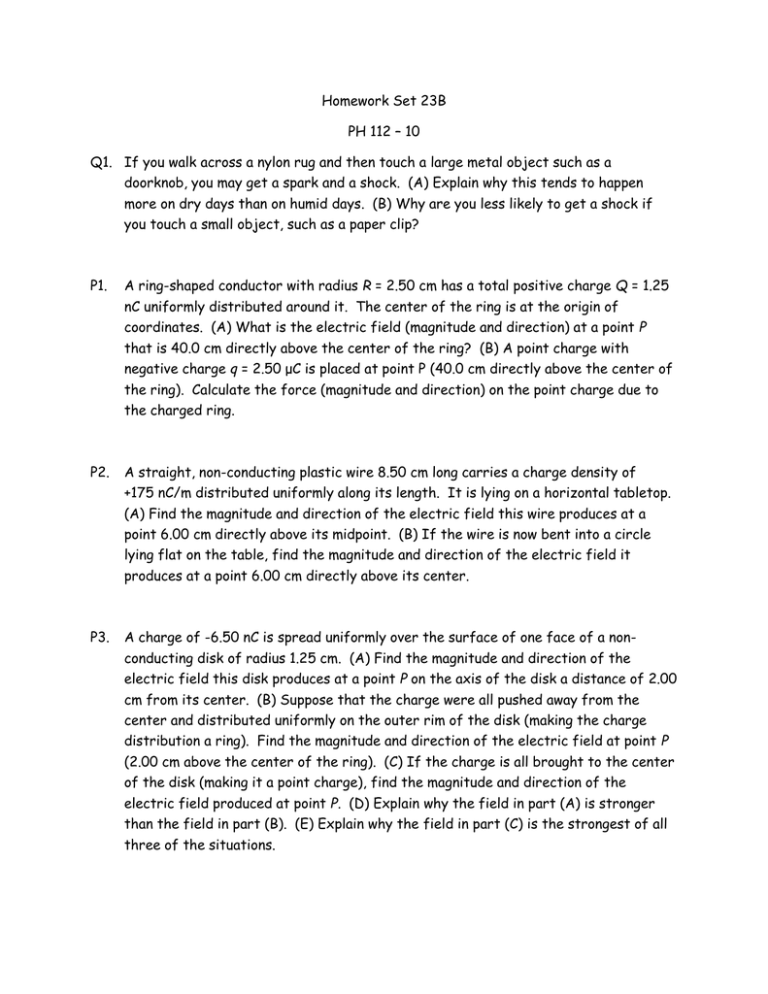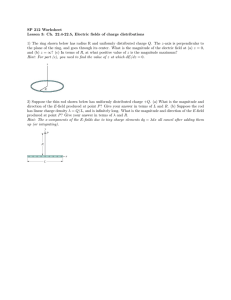Homework Set 23B PH 112 – 10
advertisement

Homework Set 23B PH 112 – 10 Q1. If you walk across a nylon rug and then touch a large metal object such as a doorknob, you may get a spark and a shock. (A) Explain why this tends to happen more on dry days than on humid days. (B) Why are you less likely to get a shock if you touch a small object, such as a paper clip? P1. A ring-shaped conductor with radius R = 2.50 cm has a total positive charge Q = 1.25 nC uniformly distributed around it. The center of the ring is at the origin of coordinates. (A) What is the electric field (magnitude and direction) at a point P that is 40.0 cm directly above the center of the ring? (B) A point charge with negative charge q = 2.50 μC is placed at point P (40.0 cm directly above the center of the ring). Calculate the force (magnitude and direction) on the point charge due to the charged ring. P2. A straight, non-conducting plastic wire 8.50 cm long carries a charge density of +175 nC/m distributed uniformly along its length. It is lying on a horizontal tabletop. (A) Find the magnitude and direction of the electric field this wire produces at a point 6.00 cm directly above its midpoint. (B) If the wire is now bent into a circle lying flat on the table, find the magnitude and direction of the electric field it produces at a point 6.00 cm directly above its center. P3. A charge of -6.50 nC is spread uniformly over the surface of one face of a nonconducting disk of radius 1.25 cm. (A) Find the magnitude and direction of the electric field this disk produces at a point P on the axis of the disk a distance of 2.00 cm from its center. (B) Suppose that the charge were all pushed away from the center and distributed uniformly on the outer rim of the disk (making the charge distribution a ring). Find the magnitude and direction of the electric field at point P (2.00 cm above the center of the ring). (C) If the charge is all brought to the center of the disk (making it a point charge), find the magnitude and direction of the electric field produced at point P. (D) Explain why the field in part (A) is stronger than the field in part (B). (E) Explain why the field in part (C) is the strongest of all three of the situations. P4. Two 1.20-m non-conducting wires meet at a right angle. One segment carries +2.50 μC of charge distributed uniformly along its length, and the other carries -2.50 μC distributed uniformly along it, as shown in the figure below. (A) Find the magnitude and direction of the electric field these wires produce at point P, which is 60.0 cm from each wire. (B) If an electron is released at point P, what are the magnitude and direction of the net force these wires exert on it?




